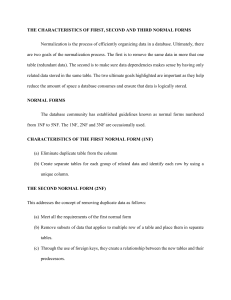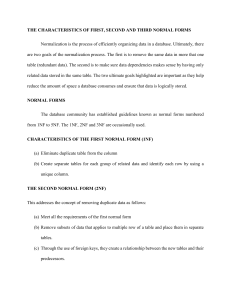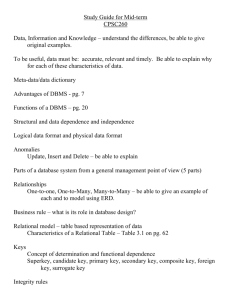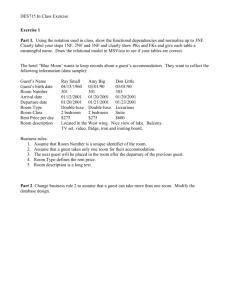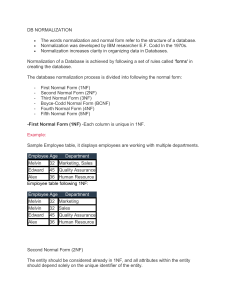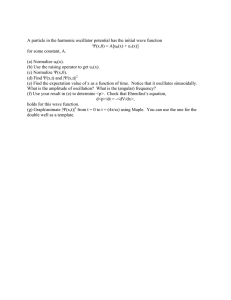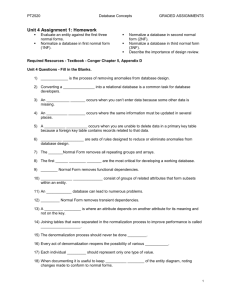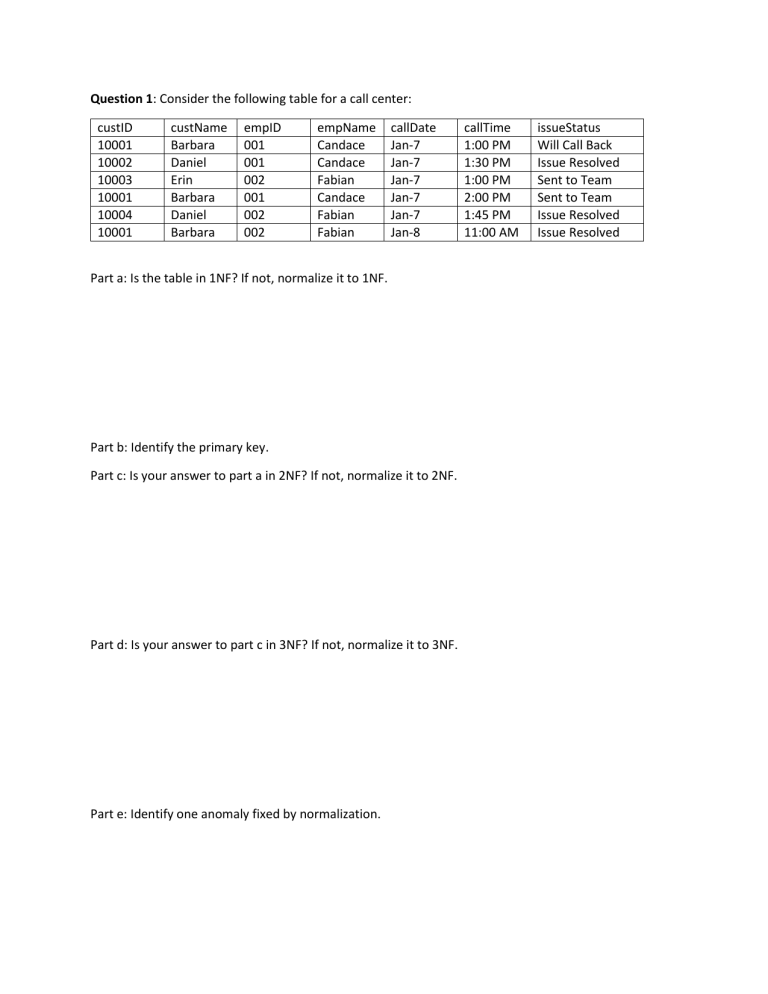
Question 1: Consider the following table for a call center: custID 10001 10002 10003 10001 10004 10001 custName Barbara Daniel Erin Barbara Daniel Barbara empID 001 001 002 001 002 002 empName Candace Candace Fabian Candace Fabian Fabian callDate Jan-7 Jan-7 Jan-7 Jan-7 Jan-7 Jan-8 Part a: Is the table in 1NF? If not, normalize it to 1NF. Part b: Identify the primary key. Part c: Is your answer to part a in 2NF? If not, normalize it to 2NF. Part d: Is your answer to part c in 3NF? If not, normalize it to 3NF. Part e: Identify one anomaly fixed by normalization. callTime 1:00 PM 1:30 PM 1:00 PM 2:00 PM 1:45 PM 11:00 AM issueStatus Will Call Back Issue Resolved Sent to Team Sent to Team Issue Resolved Issue Resolved Question 2: Consider the following table for a widget manufacturer (color is dependent on ID): factoryID 1 factoryAddr 100 Main St 2 200 Main St 3 5 Factory Rd date Apr-3 Apr-4 Apr-3 Apr-4 Apr-3 Apr-4 widgetID 001 001 001 002 002 001 widgetColor Green Green Green Blue Blue Green numProduced 497 308 133 273 304 277 Part a: Is the table in 1NF? If not, normalize it to 1NF. Part b: Identify the primary key. Part c: Is your answer to part a in 2NF? If not, normalize it to 2NF. Part d: Is your answer to part c in 3NF? If not, normalize it to 3NF. Part e: Identify one anomaly fixed by normalization. It must be a different type (modification, insertion, or deletion) that you used in question 1. Question 3: Draw an ER-model and write the schema for the following scenario: A chess club has asked you to create a database for them to keep track of their information. Each member of the club has a member ID, name, and rank. Each game takes place between two members. Each game has a game ID, date, time, and result. The club occasionally holds tournaments. Each tournament has a name uniquely identifying that tournament. Each tournament consists of at least sixteen games, although not every game is part of a tournament. One member wins each tournament. Bonus Question: Consider the ER-model for the scenario below. The ER-model contains either a fan or a chasm trap. Identify the type of trap and create a new ER-model with the trap fixed. You are making a database to track staffing and appointments at a set of doctors’ offices. Each practice has doctors and staff. Each patient belongs to one practice but can see multiple doctors at that practice.
